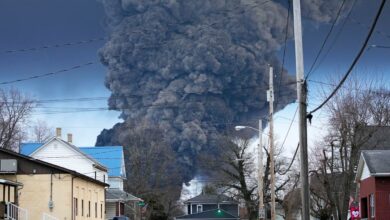Scientists have found a feline solution to the climate crisis

MIT scientists have discovered a low-cost product that could have signficant potential for curbing rampant global warming.
A team of researchers found that when you add copper to Zeolite clay, which is used to make cat litter, and heat it up, the substance can help transform methane into carbon dioxide (CO2), The Wall Street Journal reported on Tuesday.
In a paper describing the process last year, the MIT team wrote that the idea “illustrates the promise of using low-cost, earth-abundant materials to mitigate methane and slow the pace of climate change”.
While CO2 is the most prominent planet-warming greenhouse gas, created largely by humans burning fossil fuels, it’s not the only one.
Methane has around 30 times the warming effect of CO2 over 100 years. Methane is mainly produced from venting and leaks from the fossil fuel industry, landfills, and, notoriously, livestock like cattle, the EPA notes.
The cattle digestive system produces methane as it breaks down food in a process called “enteric fermentation,” which the EPA says is reponsible for 27 per cent of US methane emissions, mostly from cows.
Globally, livestock emit around 155 million tonnes of methane per year, according to the UN Environment Program.
Tackling the climate crisis has largely centered on CO2 because it’s the most common. In the US, CO2 makes up 79 per cent of all greenhouse gas emissions, according to the US Environmental Protection Agency (EPA).
Methane comes in second at 11 per cent but that smaller amount has a large impact. Methane emissions have resulted in about 30 per cent of all global heating to date, according to the UN Environment Program.
Increasingly, countries are focused on tackling methane as an crucial part of climate action. Last year, 122 countries and the European Union signed the Global Methane Pledge which aims to reduce methane emissions 30 per cent by 2030.
Turning methane into CO2 wouldn’t eliminate warming potential, but it would be mean less warming at least in the short-term.
The MIT team were able to show that by heating the modified “cat litter” to a few hundred degrees Celsius, it can break down methane into CO2, even when there was little methane in the air to begin with. This means the gas would not need to be concentrated to break it down with this process.
The process is would also be more feasible than other methane-reduction techniques that need higher temperatures, expensive materials and complicated setups, a press release says. The researchers aim to engineer a system that can reproduce the process on a larger scale, as well as figure out where such a contraption would be best located.
Researchers are determining if a kind of methane-reduction machine with this technology could be installed on heavy-emitting sources like certain livestock farms, the Journal reports.
At scale, such technology could provide a partial solution for tackling the climate crisis – however there’d still be plenty of CO2 to keep warming the planet.
Other research has focused on carbon capture technology to draw CO2 out of the atmosphere but so far deployment has not been widespread or advanced enough to make a significant dent in global emissions.





